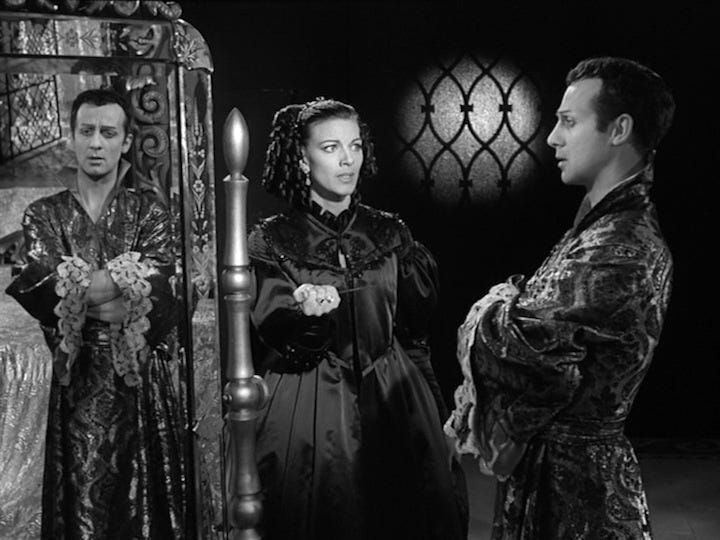The Devil's Eye (1960)

Dear fans of "The Good Place,"
If you are still bummed out about the series being over, don't fret. I have found your gateway to the films of Ingmar Bergman. I know the man and his films can be intimidating. However, they're not all Persona or "The Seventh Seal," which often requires pressing the pause button to ask questions. A lot.
For musicals fans, I always suggest Bergman's "Smiles on a Summer Night" since it was the source for the musical "A Little Night Music." For horror fans who know "Last House on the Left," there's "The Virgin Spring," which was a direct influence storywise. For fans of Woody Allen (they're still out there, just quieter), Bergman has been a forever influence on him. Allen's films are filled with Bergmanesque moments especially in comedies like "Love and Death" and his dramas like Interiors, which was his valentine to Bergman's domestic dramas like "Cries and Whispers."
As I have been going through my Ingmar Bergman collection, I came across a comedy (yes, he made a few) from 1960 (released in the US in 1961) called "The Devil's Eye." See if any of this sounds like a familiar television show which ended its run earlier this year.
The film begins in The Bad Place, where Satan (Stig Jarrel) works from a very nice office while flames constant lap outside his office window. Satan recruits Don Juan (Jarl Kulle) and manservant Pablo (Sture Lagerwall) to travel to Earth. DJ's challenge? To de-flower the virgin Britt-Marie (Bibi Andersson) who is not only the daughter of The Vicar (Nils Poppe), but is also engaged. If DJ can pull this off, his reward will be dreamless sleep.
DJ and Pablo start out easily by helping the Vicar when he has auto trouble. Grateful for the kindness of strangers, the Vicar invites the two to his home. We meet Britt-Marie as she is painting a room. Even dressed down in painting garb, Bergman regular Andersson is still Tahani-level stunning. The two are invited to dinner. While DJ sets out on his plan, Pablo advances himself on the Vicar's wife Renata (Gertrude Fridth). Satan occasionally pops up on Earth (not with the grace and style of The Good Place's Janet) to keep an eye on his two workers.
I don't want to give away too much, but let's say Swedish farcical moments ensue. At times it can be, as Eleanor would say, forking funny. Bergman liked to insert moments of comedy in his darkest films and he does do the reverse in this comedy. I mean the film does start and end in The Bad Place. While Bergman is best known for his film work, he also directed his share of theatrical plays throughout his career. For the longest stretches, he has had his own company of fiercely loyal actors. Many of them worked on "The Devil's Eye" including Andersson, Kulle and Fridth. Very attuned to Bergman's style of storytelling and it shows in this comfortable dark comedy.
"The Devil's Eye" is not top-shelf Bergman and it's not his silliest comedy. That award goes to his ribbing of cinema-peer Federico Fellini in All These Women (the film he made before Persona). This is a fun lightweight (as light as Bergman can be) farce and if you're still bummed over the the end of The Good Place, this film will tide you over. Plus it will show that there's more to Ingmar Bergman than playing chess with death.
Hugs, Matthew
Matthew Socey is host of Film Soceyology for wfyi.org.


